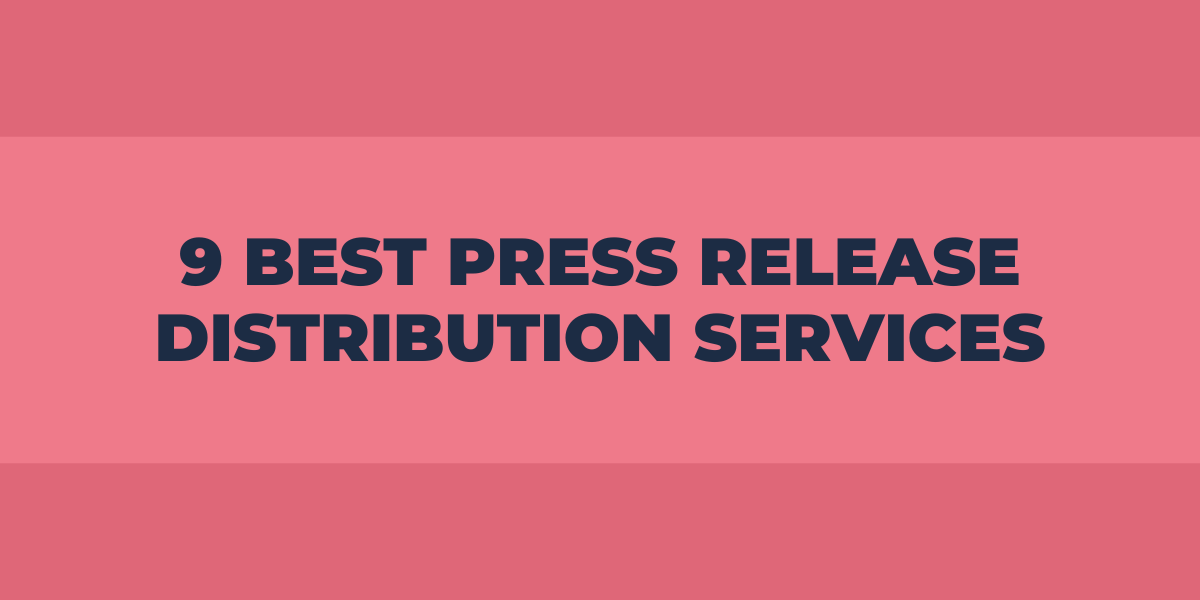BUSINESS
The Complete Guide to Online Business Services from the Montana Secretary of Statea

Starting or managing a business can be daunting, but the Montana Secretary of State’s online services make it easier than ever. Whether you’re registering a new business, filing annual reports, or searching for business records, these digital tools are designed to save you time and simplify the process.
This guide will walk you through everything you need to know about the Montana Secretary of State’s online business services, ensuring you’re equipped to handle essential tasks efficiently.
Why Use Montana’s Online Business Services?
Running a business involves juggling countless responsibilities, from compliance to paperwork. The Montana Secretary of State’s online platform is specifically designed to streamline these administrative tasks. Here’s why it’s worth using:
- Accessibility: The services are available 24/7, allowing you to handle business-related matters at your convenience.
- Efficiency: Tasks like registering a business, filing documents, or searching for records can be completed in minutes.
- Compliance Simplification: Stay on top of deadlines and requirements with user-friendly features and reminders.
- Cost Efficiency: Avoid costly errors and delays by using a structured and transparent system.
Now, let’s explore the key services offered online and how to make the most of them.
Key Services Provided by the Montana Secretary of State
1. Registering a New Business
Registering your business is the critical first step. Whether you’re forming an LLC, corporation, or sole proprietorship, the Montana Secretary of State’s website allows you to complete the process online.
How to Register Your Business Online
- Choose Your Business Structure: Decide whether an LLC, corporation, or another entity type best fits your needs. The site provides guidelines and descriptions for each.
- Check Name Availability: Use the “Business Entity Search” tool to confirm your desired business name is available.
- Complete the Registration Form: Fill out the required information, including your business name, address, and owner details.
- Pay the Filing Fee: Fees vary depending on the entity type but are clearly stated during the process.
- Receive Confirmation: Once filed, you’ll receive an official confirmation email and any related documents.
Pro Tip: Research Montana-specific business tax obligations or permits needed for certain industries to ensure compliance.
2. Filing Annual Reports
Annual reports are crucial for keeping your business active and in good standing with the state. Skipping this step could lead to penalties or even administrative dissolution.
Streamlined Reporting
- Sign into the Montana Secretary of State’s ePass Portal.
- Locate your business through the dashboard.
- Follow the guided process to update your business details if necessary.
- Submit your report and pay the associated fee.
By filing online, you’ll receive instant confirmation and a record of your submission, making it easy to track your filings year over year.
3. Business Name Reservation
Not quite ready to register your business but want to secure a name? The Montana Secretary of State offers a name reservation tool as part of the online services.
- Search for available names quickly.
- Reserve your chosen name for up to 120 days for a small fee.
- Transition seamlessly from name reservation to registration when you’re ready.
4. Business Entity Search
Whether you’re researching competitors, verifying the status of a company, or ensuring your business name is unique, the business entity search is invaluable.
What You Can Do:
- Look up registered businesses in Montana.
- Access business information, including status, registration date, and owners.
- Download documents like certificates of good standing.
The intuitive search function ensures you can find what you’re looking for without hassle.
5. Online Document Filing and Retrieval
Gone are the days of sending physical documents and waiting weeks for processing. Montana’s business portal allows you to file and retrieve documents electronically.
You can:
- File for business formation, amendments, and dissolutions.
- Download copies of submitted forms.
- Print certificates or documents when you need hard copies.
6. Notary and Apostille Services
For businesses dealing with international clients or contracts, accessing notary and apostille services digitally can be a game-changer. Submit and track requests online for streamlined processing.
Benefits of Transitioning to Online Services
Adopting the Montana Secretary of State’s online tools offers several significant advantages:
- Reduced Wait Times: Transactions are processed faster than traditional mail or in-office visits.
- Paperless Environment: These services allow businesses to reduce their environmental impact by working digitally.
- Automated Compliance: Many of the platform’s features include reminders for upcoming deadlines, like annual reports, ensuring you never miss a filing.
- User-Friendly Interface: Even if you’re not tech-savvy, the clear navigation and instructions make tasks simple.
Tips for Using the Online Platform Effectively
- Create an ePass Account Early
Having an ePass account is essential to access many services on the platform. Set it up early and link your business for seamless management.
- Double-Check Information
Errors in filing can cause delays. Always review your submissions before finalizing them. If you’re uncertain, reach out to the Montana Secretary of State’s customer support team for clarification.
- Keep Digital Copies of Everything
Download and store copies of all your filings and confirmations. Having digital backups ensures quick access and saves the hassle of re-requesting documents.
- Set Reminders for Deadlines
Leverage tools like your calendar or task management software to remember key filing dates. Some tasks, like annual reports, recur annually and typically have set deadlines.
Building a Community of Business Success
The Montana Secretary of State’s commitment to efficiency doesn’t stop at providing online tools. Their website is also a hub of resources to support entrepreneurs and established business owners alike.
Discover guides to help you:
- Understand state-specific business laws.
- Access funding or grants.
- Network with local organizations that foster business growth.
By integrating these resources into your processes, you’ll stay informed and ready to adapt to Montana’s dynamic business landscape.
Get Started Today
Taking your business to the next level has never been easier. With the Montana Secretary of State’s online business services, you can streamline your workflow, ensure compliance, and focus on what truly matters—growing your company.
Visit the Montana Secretary of State’s website today and explore the tools available to give your business that extra edge.
BUSINESS
Business Wire: Your Guide to Global Press Release & Newswire Distribution

For businesses, press releases remain a vital tool to share updates, launch products, and communicate key milestones. However, crafting a brilliant release isn’t enough—getting it in front of the right people is just as important. Enter Business Wire, a global leader in press release distribution and newswire services.
This comprehensive guide will break down the ins and outs of Business Wire, its key offerings, and how it can be an essential partner for businesses looking to make an impact with their announcements.
Why Business Wire Matters for Effective Communication
Founded in 1961, Business Wire has been at the forefront of press release distribution for over 60 years. It operates as a global newswire service trusted by media outlets, PR firms, journalists, and companies worldwide. But what sets it apart?
At its core, Business Wire ensures that your press release doesn’t just get sent out—it gets noticed. Through advanced distribution technology and a deep network of media partnerships, your story reaches key audiences across industries, markets, and geographies.
Key Benefits of Business Wire
- Wide Reach
With access to over 89,000 media outlets in 162 countries and more than 20 languages, Business Wire ensures your message crosses borders and barriers.
- Targeted Distribution
Whether it’s healthcare, technology, retail, or finance, you can tailor your distribution to reach the right industry or audience segment for maximum impact.
- Credibility
News distributed via Business Wire often receives priority from media platforms because of the trust it has built over the years. This can give your message more weight compared to other distribution methods.
- SEO & Analytics
Business Wire uses advanced SEO techniques to boost your online visibility and provides detailed analytics, giving you valuable insights into who’s viewing your content and how it’s performing.
What Services Does Business Wire Offer?
Business Wire isn’t just about sending press releases—it’s a full-service platform designed to amplify your message. Below is a breakdown of their key offerings:
1. Global News Release Distribution
Business Wire’s flagship service offers widespread and customizable press release distribution. Users can:
- Choose specific geographies or industries.
- Deliver press releases in multiple languages.
- Target niche audiences, like financial analysts or key journalists.
Example Use Case
A fintech startup rolling out a new payment app could use Business Wire to send targeted announcements to financial journalists in the U.S., Europe, and Asia while also ensuring distribution to investors and tech media outlets.
2. Multimedia Distribution
Want your press release to stand out? Adding visuals can dramatically boost engagement. Business Wire lets you embed videos, infographics, images, and logos into your releases, increasing their chances of being shared and featured by media outlets.
Pro Tip
According to data, press releases with visuals receive up to 94% more views than text-only releases. Use this tool to make your announcement eye-catching.
3. Investor Relations Communication
If you’re in a publicly traded company, transparency with stakeholders is non-negotiable. Business Wire specializes in distributing regulatory disclosures and financial announcements to ensure compliance with global regulations like the SEC, FERC, and more.
4. Targeted Media Lists
Business Wire allows clients to access curated media lists to find the perfect journalists or outlets for specific news. Instead of sending a blanket release, you can pinpoint the exact reporters who are most likely to cover your story.
5. Newsrooms and Hosting
Business Wire offers virtual pressroom services where companies can host all their press materials in one place. This ensures reporters, bloggers, and analysts find everything they need—from past releases to multimedia assets—without hassle.
6. Performance Tracking and Reporting
Every release you send via Business Wire comes with detailed analytics, including:
- Number of views and click-through rates.
- Geographic distribution performance.
- Audience demographics.
This data helps you refine future campaigns and measure ROI effectively.
How to Craft a Winning Press Release with Business Wire
While Business Wire offers unmatched distribution, the content of your press release plays a pivotal role in its success. Use these tips to maximize impact:
1. Start with a Compelling Headline
Your headline is the first point of contact, so make it count. Keep it concise, action-oriented, and newsworthy. Example:
- Weak Headline: “We launch our new X200 product.”
- Strong Headline: “X200 Launches, Bringing Innovative AI Features to Small Businesses.”
2. Write for Your Audience
Whether it’s industry insiders or general consumers, tailor the tone, language, and details of your release to suit your audience. Include relevant stats, use relatable examples, and clarify technical jargon.
3. Include a Strong Call-to-Action
Encourage readers to take the next step—be it visiting a website, registering for an event, or downloading a report.
4. Optimize for SEO
Business Wire’s platform already boosts visibility, but you can further maximize reach with SEO best practices:
- Use focus keywords.
- Insert links to your website or key pages.
- Write content that’s easy to read, using bullet points and short sentences.
5. Leverage Multimedia
Enhance your story with high-resolution images, infographics, or a short video. These elements are more likely to catch the attention of journalists and readers alike.
Who Should Use Business Wire?
Organizations of all sizes and industries stand to benefit from Business Wire’s services. Some common users include:
- Startups launching products or announcing funding rounds.
- Corporates sharing quarterly financial results.
- Nonprofits promoting campaigns or announcing new programs.
- Agencies managing PR for clients.
Real-Life Success Story
Case Study
A fast-growing e-commerce company used Business Wire to announce its partnership with a national retailer. With distribution to industry-focused news outlets, the press release garnered coverage across major finance and retail publications, resulting in a 40% increase in traffic to their website within 48 hours.
Final Thoughts on Business Wire
Business Wire is far more than a press release distribution service—it’s a strategic communications partner that helps businesses amplify their voice and reach the audiences that matter most.
Whether you’re looking to boost brand awareness, build credibility, or connect with media outlets around the world, Business Wire provides the tools, technology, and expertise to deliver results.
BUSINESS
BBC Business Breakdown: Exploring Economy, Tech, AI, Work, and Personal Insights

The world of business is constantly evolving, shaped by rapid technological advancements, shifting economic landscapes, and changing perspectives on work and personal development. Understanding these changes is critical for staying ahead in a globally connected, competitive environment.
This blog dives into five key themes—Economy, Technology, Artificial Intelligence, Work trends, and the intersection of Business and Personal development. We’ll explore cutting-edge insights, emerging trends, and actionable takeaways to keep you informed and equipped for success.
The Economy in a Flux
The economy serves as the backbone of global business, and tracking its ebbs and flows is essential for strategic planning.
Current Economic Trends
- Global Inflation: With inflation spikes observed across multiple nations, consumer purchasing power is diminishing, and businesses are adapting with pricing strategies or operational efficiency cuts.
- Supply Chain Challenges: Disruptions stemming from geopolitical tensions, such as the war in Ukraine, and post-pandemic adjustments have created a ripple effect in supply chain management for businesses globally.
- Sustainability in Finance: Green initiatives, such as carbon-neutral pledges by corporations, have driven shifts in financial markets, with sustainable bonds and ESG (Environmental, Social, and Governance) investments gaining traction.
Example:
Corporate giants such as Apple and Unilever have increased investments in renewable energy and zero-waste practices, aligning with global sustainability standards to both minimize costs and cater to environmentally conscious consumers.
What Businesses Should Consider
- Adapt pricing models intelligently to counter inflation without alienating consumers.
- Invest in digital tools to better predict supply chain behaviors and mitigate disruptions.
- Prioritize sustainability to remain compliant with global mandates and build long-term trust.
Technology Revolutionizing Business
Technology continues to reshape industries at an astonishing pace. Emerging tools and platforms unlock potential, improve efficiency, and innovate service delivery.
The Role of Cloud Computing
Companies of all sizes are migrating to cloud computing platforms like AWS and Microsoft Azure to improve both data storage and system scalability.
Key Benefits:
- Cost savings from reduced hardware dependence.
- Enhanced collaboration through real-time remote access capabilities.
Blockchain Beyond Cryptocurrency
Blockchain is no longer limited to bitcoin; industries like healthcare and retail are leveraging it for increased transparency and security.
Real-world Use:
Walmart has employed blockchain to track its supply chain with unparalleled accuracy, helping trace food origins in seconds, not days.
Businesses Should Focus On:
- Training staff on digital platforms and tools to capitalize on cloud advantages.
- Investing in blockchain to build trust and accountability across supply chains.
Artificial Intelligence Leading the Business Frontier
AI is more than a futuristic buzzword; it’s now a functional tool transforming industries by streamlining operations, refining customer service, and informing strategic decisions.
AI Applications Across Industries
- Customer Services: AI chatbots are replacing human agents for first-response queries.
- Healthcare: Deep-learning models aid quicker diagnoses.
- Retail & E-commerce: Algorithms analyze consumer behavior to create hyper-personalized shopping experiences.
Success Story:
Clothing retailer ASOS boosted its click-through rate with an AI-driven recommendation engine, increasing e-retail conversions by 10%.
Ethical AI
AI development brings ethical questions, with companies under increasing pressure to ensure fair, unbiased algorithms.
Tips for Businesses Adopting AI:
- Use AI to automate time-intensive processes while freeing employees for strategic work.
- Audit AI models for impartiality and compliance with regulatory standards.
Work Trends Shaping the Future
The pandemic redefined our understanding of work—shifting dynamics such as remote work and workplace culture are now at the forefront.
Key Trends
- Hybrid Work Models: Companies like Microsoft have embraced flexible models, combining office and remote work.
- Focus on Employee Well-Being: Benefits extending beyond paychecks—such as mental health support and flexible hours—are becoming the standard.
Skills Over Degrees
Employers recognize that in-demand roles, particularly in tech, benefit more from skills than formal qualifications. Industry certifications and coding bootcamps are growing alternatives for recruiting top talent.
For Employers:
- Reevaluate hiring processes to prioritize relevant skills.
- Invest in cross-training programs to upskill existing employees.
Personal Growth and Business
Business success and personal growth are intertwined. The focus on personal development is increasing for both organizations and individuals.
Mindfulness & Productivity
Practicing mindfulness has been linked to improved productivity. Leaders advocating mental wellness—such as Patagonia’s late founder Yvon Chouinard—have set cultural benchmarks.
Lifelong Learning
Dynamic fields like those in STEM (Science, Technology, Engineering, and Math) require ongoing skill acquisition. Online platforms, such as LinkedIn Learning and Coursera, offer accessible courses designed for this purpose.
For Personal Development:
- Prioritize learning new tools or skill sets aligned with emerging trends.
- Cultivate habits, such as journaling or meditation, to enhance mental clarity and goal focus.
Preparing for Tomorrow’s Business Landscape
The interconnected themes of economy, technology, AI, work environments, and personal growth drive the business world. Adapting to these shifts proactively is what separates leaders from followers.
Leverage these insights to stay informed, make smarter decisions, and position yourself as a forward-thinking professional or business. For more in-depth analysis and actionable tips, follow BBC Business’ specialized coverage online.
BUSINESS
What Is a Business? Understanding Different Types

matter where you look in modern society, businesses are all around us. From multinational corporations to mom-and-pop stores, businesses shape communities, provide goods and services, and drive economic growth. But what exactly defines a business, and how do the different types of businesses influence the way they operate?
If you’re curious about what a business really is—or if you’re considering starting one of your own—this guide will walk you through the fundamentals and explain the different types of businesses. By the end, you’ll understand how they function and how to determine the right type for your goals.
What Is a Business?
At its simplest, a business is an entity that produces goods or provides services to customers in exchange for financial compensation. This activity can range from selling coffee in a neighborhood café to developing cutting-edge tech solutions used worldwide.
Here’s the key takeaway—the primary goal of a business is profit. While some organizations, such as non-profits, prioritize other objectives (like social impact), profit generation often forms the backbone of traditional businesses.
Key Characteristics of a Business
For an entity to qualify as a business, it must exhibit certain characteristics:
- Commercial Activity: Engages in the sale of products or services on an ongoing basis.
- Profit Motive: Has a primary focus on generating revenue and, subsequently, profit.
- Organization: Includes structured operations, resources, and systems necessary to function effectively.
Common Types of Businesses
Choosing a business type goes beyond paperwork—it influences taxation, liability, and even growth opportunities. Below are the main categories of businesses you’ll encounter.
1. Sole Proprietorship
What is it?
A sole proprietorship is owned and operated by a single individual. It is the simplest form of business and doesn’t involve formal incorporation. The owner and the business are considered one legal entity.
Pros:
- Easy to set up and maintain.
- Full control over business decisions.
- Profits are taxed as personal income.
Cons:
- Unlimited personal liability—owners are responsible for debts and legal issues.
- Harder to secure funding compared to larger organizations.
Example:
A freelance graphic designer who works independently without registering as an LLC operates as a sole proprietor.
2. Partnership
What is it?
A partnership involves two or more people who agree to co-own and manage the business. Partnerships can be general (equal sharing of responsibility) or limited (one partner has more control and liability than the others).
Pros:
- Pooled resources and expertise.
- Shared financial responsibility.
- Mutual decision-making.
Cons:
- Shared liability—partners are personally liable for debts incurred by the business.
- Potential conflicts between partners.
Example:
Two friends opening a bakery and splitting profits and responsibilities equally.
3. Corporation
What is it?
A corporation is a legal entity that is separate from its owners. It can own property, enter contracts, and be taxed independently of its shareholders. Corporations can be C-Corps or S-Corps.
Pros:
- Limited liability—owners are only responsible for the amount they’ve invested.
- Easier to raise capital through shares.
- Perpetual existence, even if ownership changes.
Cons:
- Expensive to set up and maintain.
- Subject to double taxation (for C-Corps).
Example:
A large tech company like Apple or Google is structured as a corporation (C-Corp) with distinct ownership shares.
4. Limited Liability Company (LLC)
What is it?
An LLC combines elements of both partnerships and corporations. It provides limited liability to owners (like a corporation) while offering flexible taxation options.
Pros:
- Limited personal liability.
- Pass-through taxation to avoid double taxation.
- Flexible ownership structure.
Cons:
- More complex setup than a sole proprietorship.
- Regulations vary by state or country.
Example:
An independent fitness coach who registers their business entity to protect personal assets.
5. Non-Profit Organization
What is it?
A non-profit focuses on fulfilling a social, cultural, or educational mission rather than generating profit. Any earnings are reinvested into the organization’s goals, not distributed to owners or shareholders.
Pros:
- Tax-exempt status.
- Eligible for donations and grants.
- Strong emphasis on community impact.
Cons:
- Extensive compliance and reporting requirements.
- Earnings cannot be distributed to owners or members.
Example:
A charity supporting environmental conservation efforts or a museum facilitating public education.
6. Cooperative
What is it?
A cooperative is owned and operated by a group of people who share decision-making responsibilities equally. Each member typically has a vote, regardless of their financial stake.
Pros:
- Democratic structure.
- Members share profits and benefits.
- Encourages community involvement.
Cons:
- Decision-making can be slow.
- Relies on active participation from all members.
Example:
A local food co-op where members buy groceries at discounted rates and participate in operational decisions.
Choosing the Right Business Type
Selecting the right type of business depends on several factors:
- Your Goals: Are you looking to grow quickly, operate independently, or focus on social causes?
- Liability Risk: How comfortable are you with personal liability?
- Tax Implications: Each structure comes with its own tax requirements and benefits.
- Funding Needs: Some structures (corporations) are better at attracting investors than others (sole proprietorships).
- Industry Requirements: Consider legal and industry-specific rules that may influence your choice.
For example, if you’re starting as a freelancer with minimal financial risk, a sole proprietorship might make sense. However, if you’re launching a tech startup seeking investors, a corporation or LLC could benefit you more.
Why Understanding Business Types Matters
Choosing the wrong business type can lead to unnecessary risks, higher taxes, or trouble securing funding. That said, the right structure can help set your business up for success, offering both protection and flexibility suited to your needs.
Understanding the different types of businesses also fosters better decisions as a consumer. For example:
- You’re more likely to engage with non-profits if you’re drawn to social missions.
- Local cooperatives often thrive based on involvement from the community.
Taking the Next Step
Whether you’re launching your first side hustle or scaling a startup, understanding these business structures is crucial. Taking time to evaluate options against your needs and goals will ensure you set the foundation for success.
If you’re ready to start your entrepreneurial adventure, consider consulting a legal or financial expert to choose the best path forward. Equipped with this knowledge, you’re now prepared to take the leap into the world of business. Remember—great enterprises often begin with small, strategic decisions.
-

 BUSINESS9 months ago
BUSINESS9 months agoQuest for Success with QuestHRSC
-

 BUSINESS12 months ago
BUSINESS12 months agoJack Vonarb Private Equity Revolutionizing the Industry
-

 TRADING12 months ago
TRADING12 months agoThe Ultimate Guide to Mastering grossoptions.com
-

 HEALTH5 months ago
HEALTH5 months agoThe Future of Payments in the Medical Industry: Trends and Innovations
-

 GAME12 months ago
GAME12 months agoIncestflox and the Gaming Community’s Divide
-

 HEALTH3 months ago
HEALTH3 months agoAna Bolick SLP Hickory: Leading Pediatric Speech Therapy in North Carolina
-

 BLOG11 months ago
BLOG11 months agoExploring the Concept of 200/6: What You Need to Know
-

 NEWS7 months ago
NEWS7 months agoIs Technology Redefining the Experience at nothing2hide.net news?
